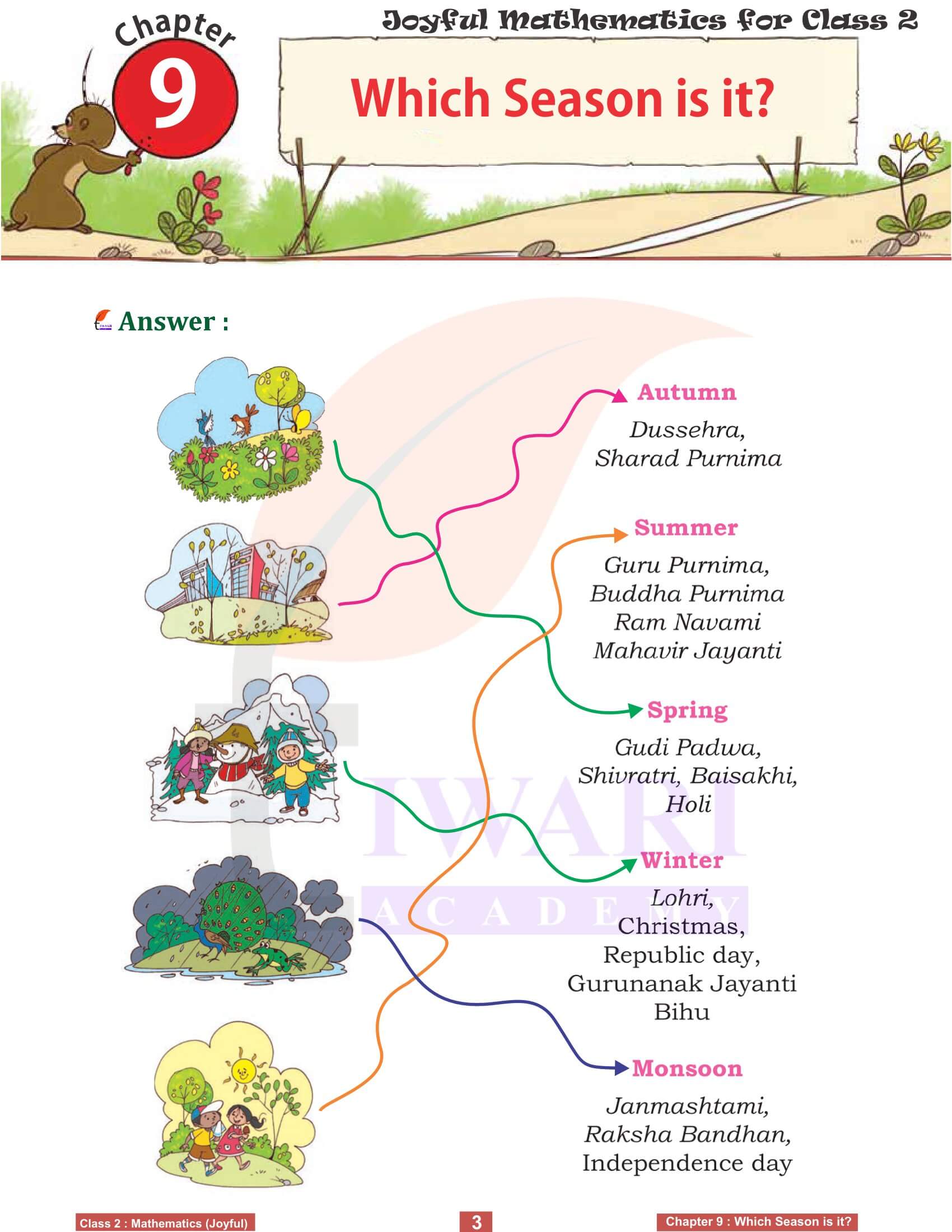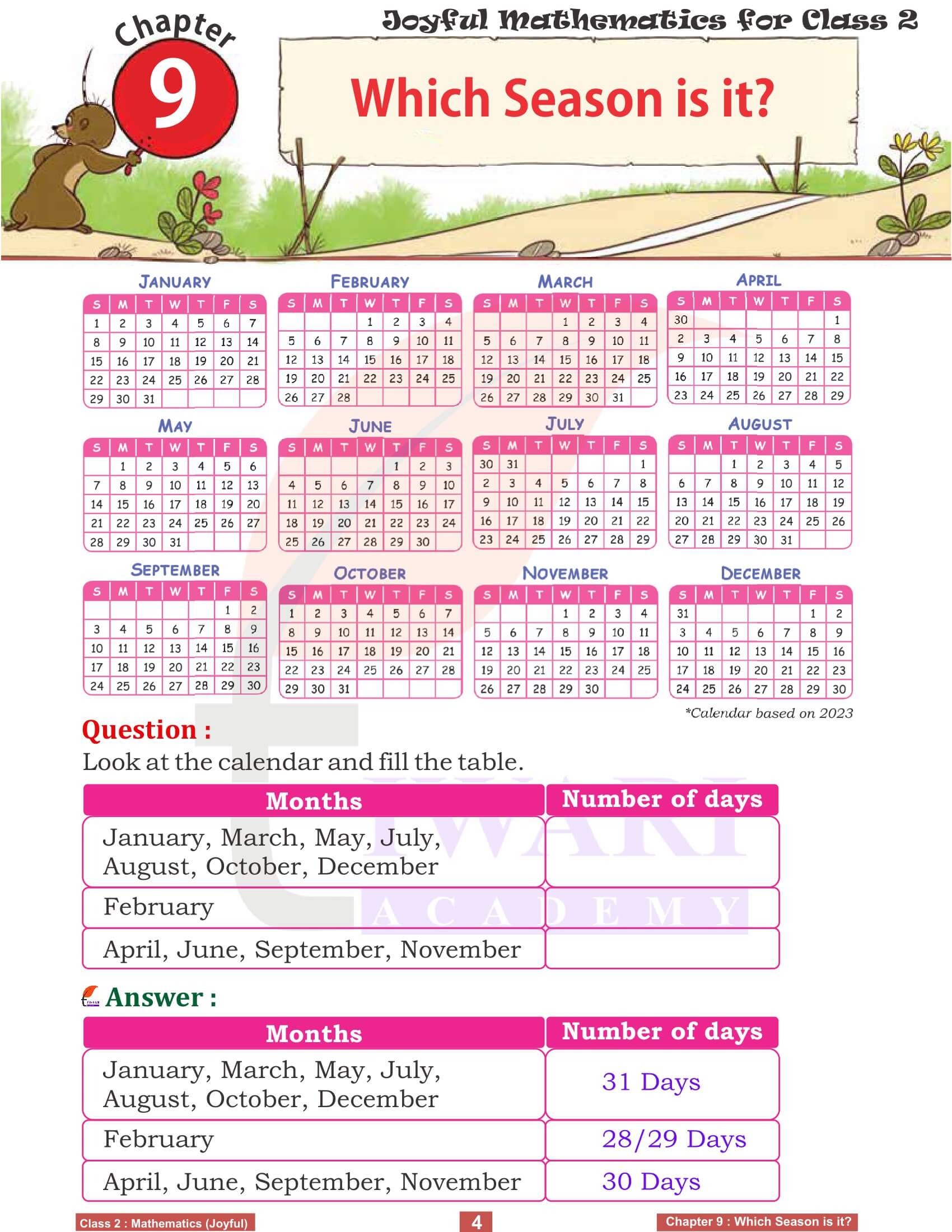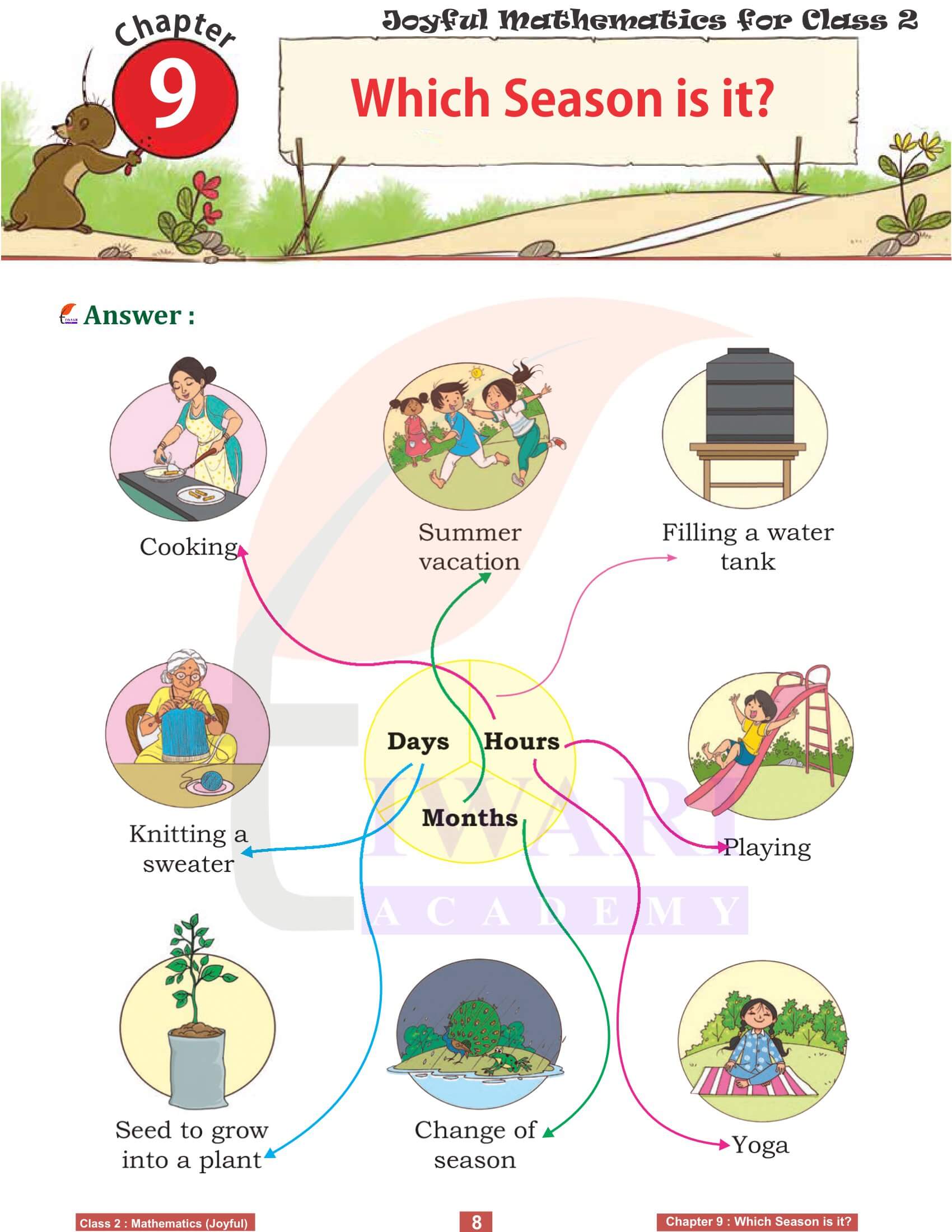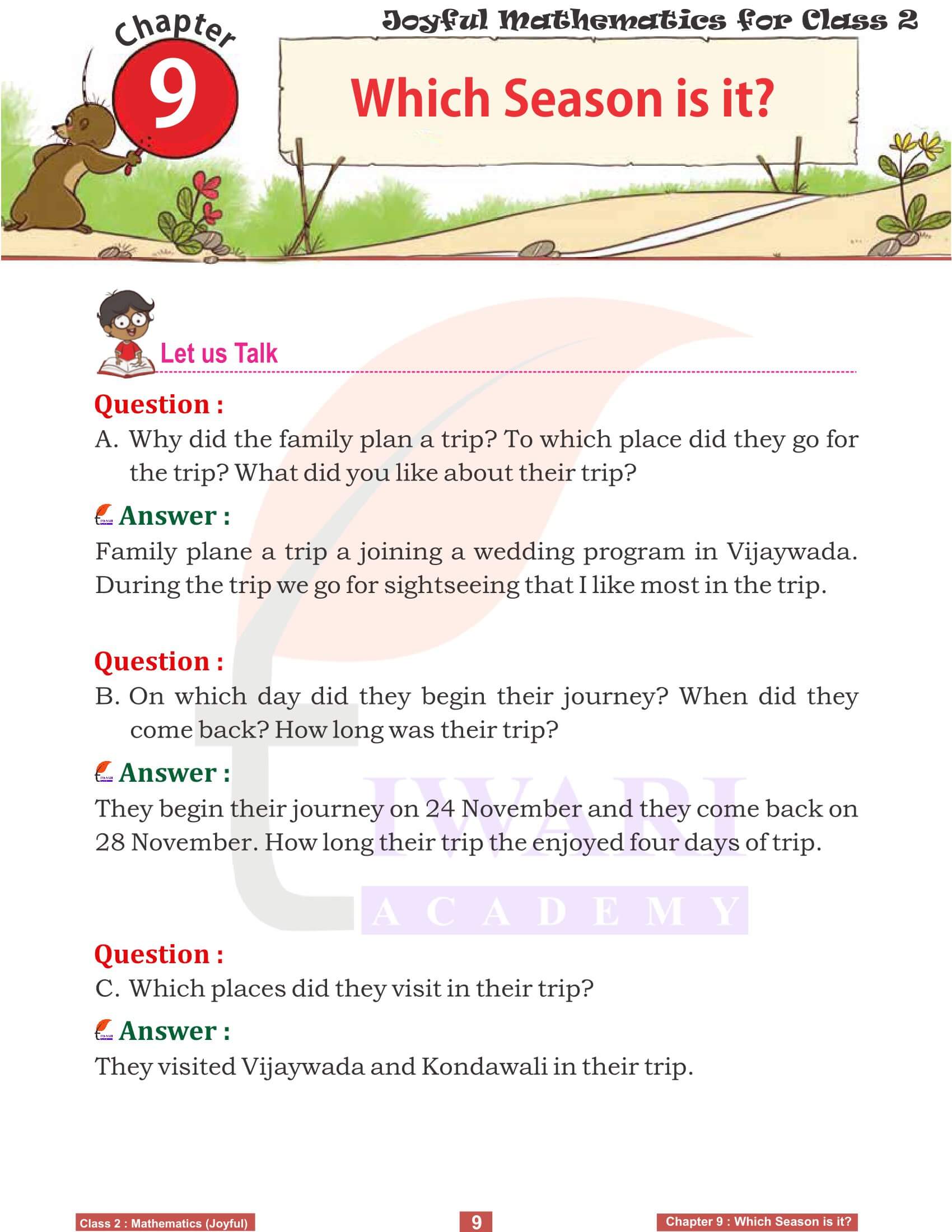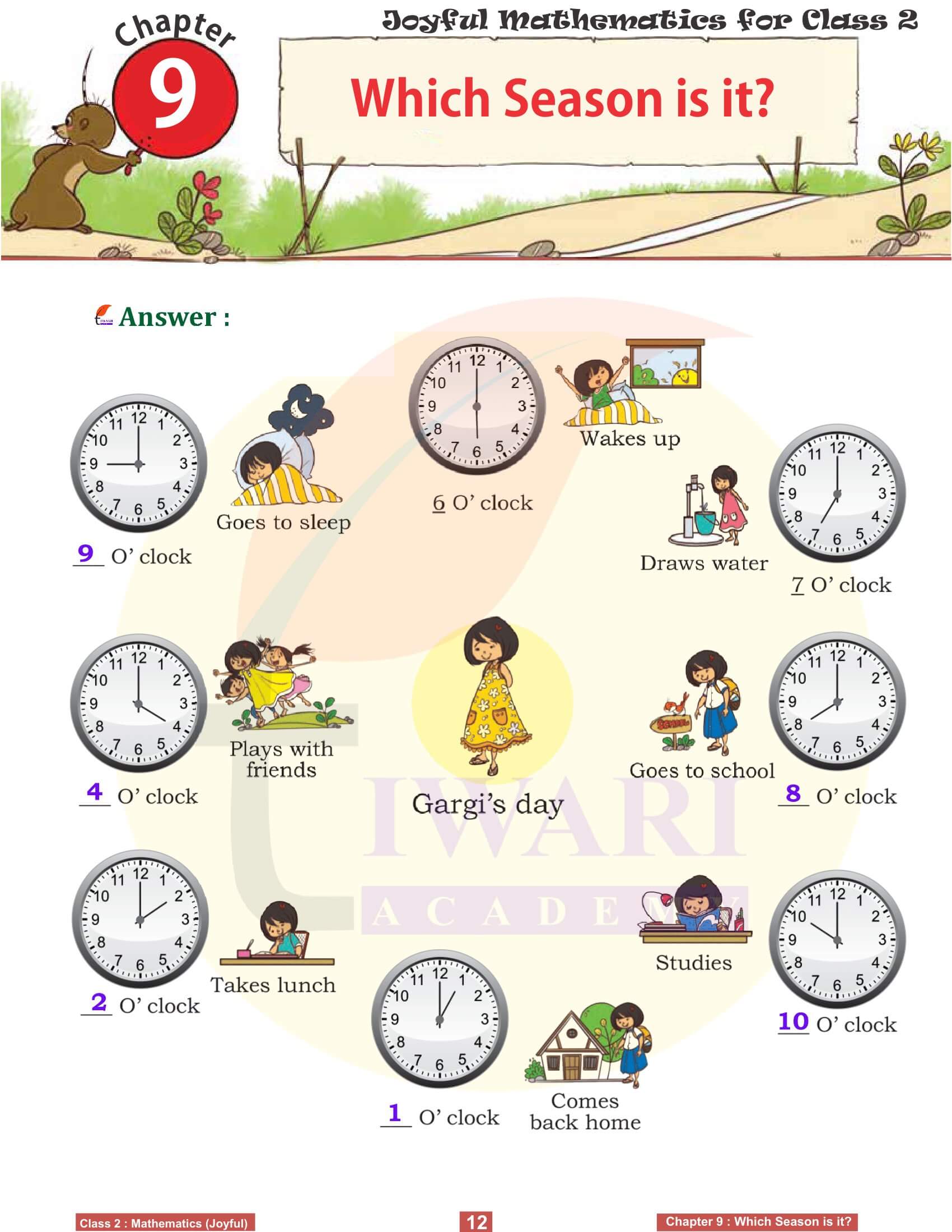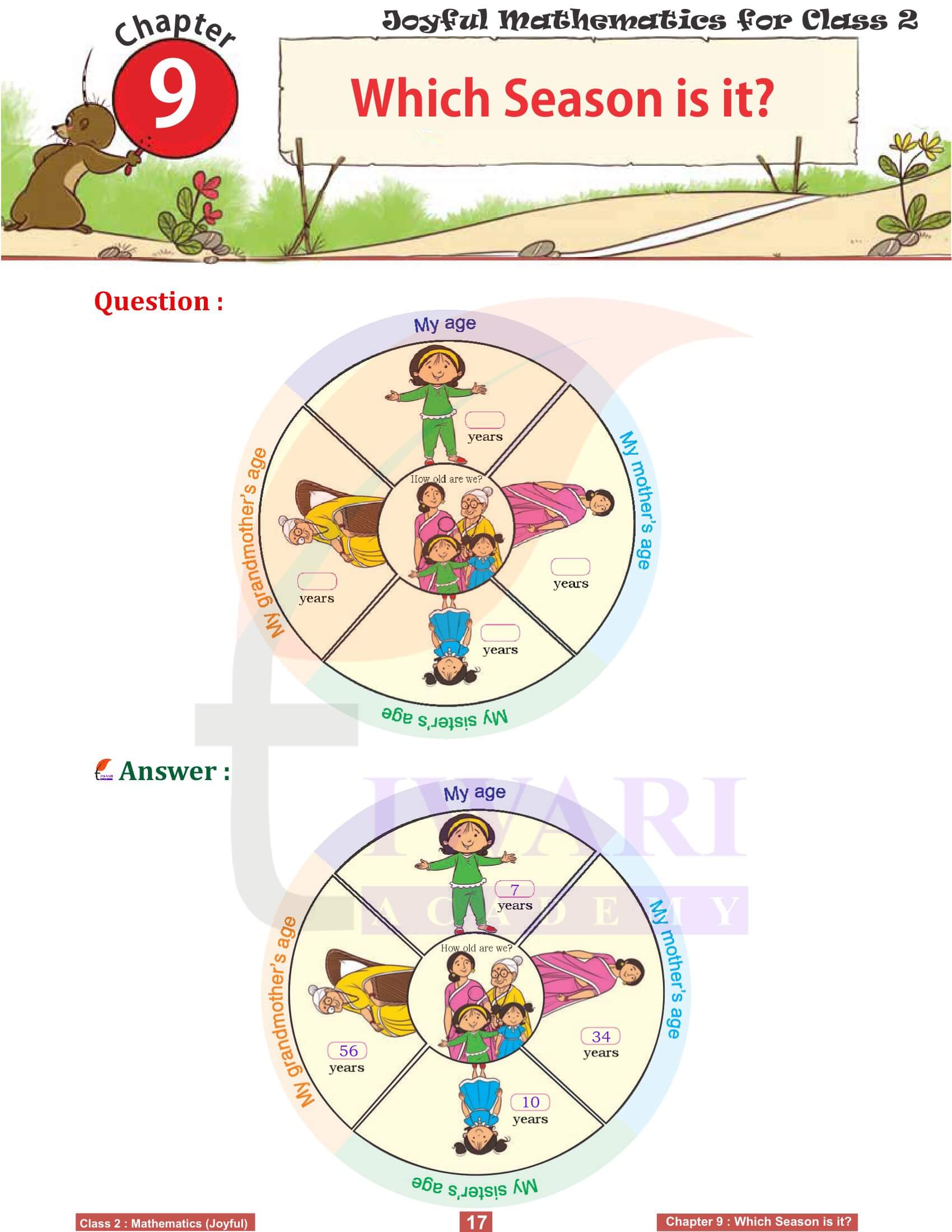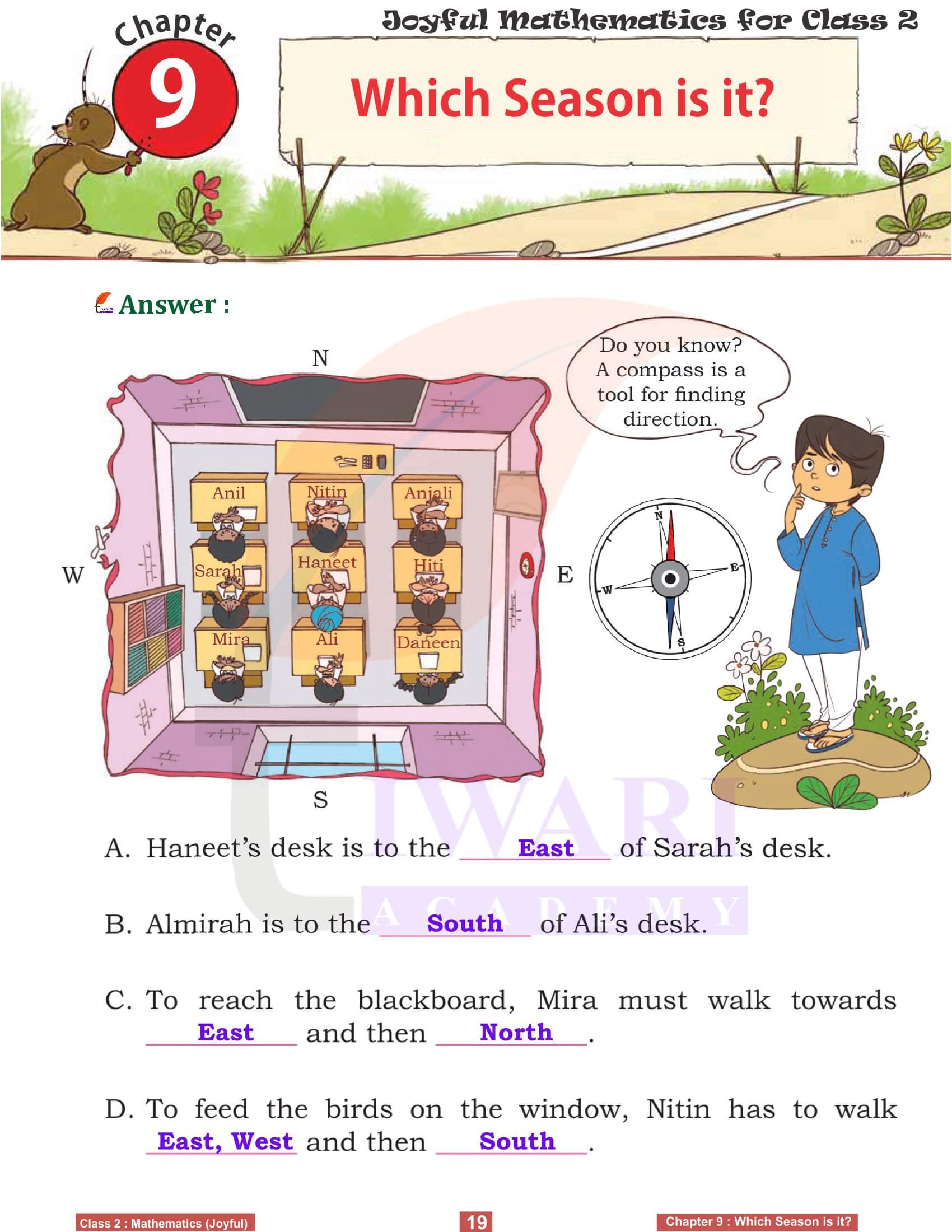NCERT Solutions for Class 2 Joyful Maths Chapter 9 Which Season is it? (Measurement of Time) in Hindi and English Medium based on National Education Policy 2020. Get here class 2 Maths Chapter 9 solutions updated for session 2025-26. Class 2 Maths Chapter 9, Which Season is it? based on Measurement of Time, introduces young learners to the fascinating concepts of time and seasons. This chapter in the Joyful Mathematics series uses engaging activities like calendar reading and identifying seasonal changes to make learning enjoyable. Students explore the basics of measuring time through exercises designed to teach them about hours, days, weeks and months.
Class 2 Joyful Maths Chapter 9 Which Season is it? Solutions
Worksheets focusing on seasons and time provide hands-on practice, reinforcing their understanding of how to use calendars. The lesson plan also includes questions that challenge children to identify the months associated with different seasons, aligning with their daily experiences. With a mix of games and activities, the chapter offers a practical approach to mathematics, ensuring that students grasp the importance of time measurement in real life.
Study Plan for Class 2 Maths
Study Plan for Class 2 all Subjects
Class 2 Maths Chapter 9 Which Season is it? (Measurement of Time)
Class 2 Maths Chapter 9, “Which Season Is It?”, introduces young learners to the basic concept of seasons and their relation to time. The chapter 9 aims to foster an understanding of how seasons change and how this change is part of a larger pattern or cycle. By discussing various seasons, such as spring, summer, autumn, and winter, the chapter provides a foundational understanding of the Earth’s climatic variations. Students learn to associate specific characteristics and activities with each season, aiding their comprehension of how weather affects our daily lives. Through engaging examples and illustrations, the chapter simplifies these concepts, making them accessible and enjoyable for second-grade students.
Measurement of time in Class 2 Math builds foundational skills that extend beyond the classroom. This chapter offers interactive exercises such as time practice, where students identify patterns in days and months and relate them to seasonal changes. Mathematics becomes fun and relatable through seasonal worksheets that connect learning with festivals and cultural activities. Teachers can access Chapter 9 solutions, including PDFs and lesson plans, to help guide students through understanding time concepts. These engaging materials enable students to develop a clear understanding of the calendar, seasons, and the passage of time. By integrating Math, Maths and real-world scenarios, this chapter creates a joyful learning experience for Class 2 students, ensuring they master these essential skills effortlessly.
Understanding the Four Seasons
Class 2 Maths Chapter 9 delves deeper into the specific characteristics of the four seasons: spring, summer, autumn, and winter. It provides detailed descriptions, helping students identify and differentiate between them. For instance, spring is associated with blooming flowers and warmer weather, signaling new beginnings. Summer is characterized by heat, longer days and various outdoor activities. Autumn brings cooler temperatures and falling leaves, representing change and preparation for the colder months. Winter, with its cold weather, short days, and snow (in some regions), exemplifies dormancy and rest. By understanding these characteristics, students gain insight into the cyclical nature of seasons and their impacts on the environment.
The Calendar and Seasons
The chapter introduces the concept of a calendar year and how it is divided into different seasons. It explains how the calendar helps us organize time into weeks, months and years, providing a structure for observing and understanding seasonal changes. The discussion extends to how different cultures and regions may have varying interpretations and names for seasons, highlighting the diversity of human experiences with time. By linking the calendar to natural phenomena, the chapter emphasizes the importance of seasons in planning and recognizing time’s passage, whether for farming, schooling or celebrating festivals and holidays.
Observing Seasonal Changes
“Which Season Is It?” encourages students to observe and record the seasonal changes they notice around them. This hands-on approach promotes active learning and critical thinking, as students relate textbook knowledge to real-world observations. They are encouraged to note changes in temperature, plant life, animal behavior, and even human activities throughout the seasons. The chapter include simple experiments or observational tasks, such as keeping a weather diary, that reinforce the concept of time measurement and environmental awareness, helping students connect with the material in a tangible and meaningful way.
Activities and Applications
To solidify understanding, the chapter includes various activities and application-based questions that engage students in exploring seasons further. These involve arts and crafts, storytelling or simple scientific experiments that illustrate the properties of different seasons. For instance, students might create season-themed art, observe how different plants grow or change across seasons or discuss how their own routines vary with the seasonal cycle. These activities are designed to make learning interactive and fun, while also reinforcing the educational content and encouraging students to apply their knowledge in diverse contexts.
Integrating Seasonal Knowledge
In wrapping up the chapter, the focus shifts to integrating the knowledge of seasons with broader life skills and interdisciplinary learning. Students are encouraged to reflect on how the changing seasons affect their lives and to develop an appreciation for the natural world’s rhythms. The conclusion might also touch on the importance of respecting and preserving the environment, understanding the global impact of climate change, and how seasons play a crucial role in the sustainability of life on Earth.
By endowing students with this holistic view, the chapter aims not only to educate but also to instill a sense of responsibility and curiosity about the world they inhabit.
What is the main focus of Class 2 Maths Chapter 9?
The main focus of Class 2 Maths Chapter 9 based on Measurement of Time, is to teach students about measuring time and understanding seasons. Through engaging activities like calendar reading and worksheets, students learn about hours, days, months and the connection between seasons and time. The chapter encourages practical learning by linking Math concepts to everyday experiences.
How do students learn about seasons in chapter 9 of Class 2 Joyful Mathematics?
Students learn about seasons by connecting months to seasonal changes through activities and worksheets. The chapter introduces the concept of seasons using real-life examples, such as festivals and weather changes, helping students understand how time and seasons relate. Practical exercises like identifying seasons in specific months make the lessons interactive and enjoyable.
What kind of activities are included in Class 2 Joyful Math Chapter 9?
Class 2 Maths Chapter 9 includes activities like calendar reading, solving time worksheets and matching seasons with months. Fun exercises, such as identifying festivals in different seasons, encourage students to connect Math with their surroundings. These activities make understanding the measurement of time simple and interactive for young learners.
How do the worksheets help class 2 students in chapter 9 of joyful math?
The worksheets in this chapter reinforce concepts like measuring time and identifying seasons. They provide hands-on practice for recognizing days, weeks and months on a calendar, along with relating them to seasonal changes. These resources ensure students gain confidence in their understanding of time while applying Mathematics to real-world scenarios.
Yes, teachers can access Chapter 9 solutions, PDFs and lesson plans available at Tiwari Academy, to guide students effectively. These resources include step-by-step explanations, practice questions and activities to ensure students grasp time measurement and seasonal concepts. They also help integrate Math seamlessly into daily learning, making the chapter engaging and comprehensive.


